New scientific interventions are here to fight climate change. But they aren't silver bullets
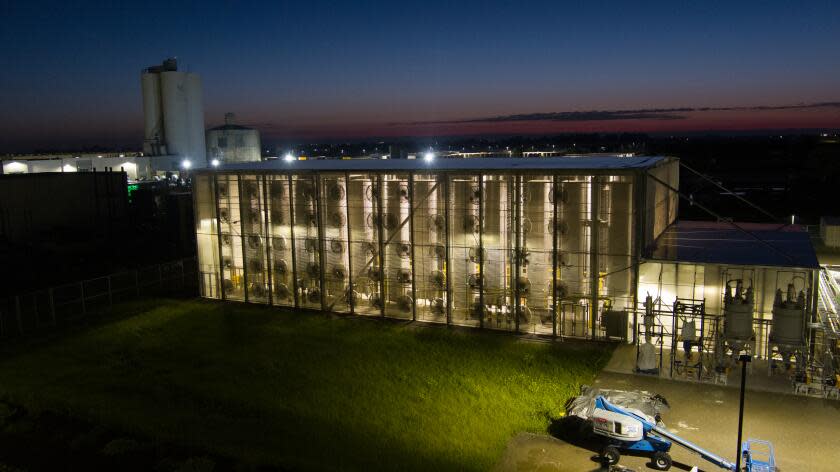
For the record:
10:32 a.m. April 22, 2024: An earlier version of this article said Heirloom’s Tracy, Calif., facility is 50,000 square feet. It is 15,000 square feet.
Behind a chain-link fence in a corner of San Joaquin County sits one of California's — and perhaps the world's — best hopes for combating climate change.
Here at the nation's first commercial direct air capture facility, towering trays of limestone mineral powder are working round-the-clock to remove carbon dioxide from the atmosphere. Robots skitter and whir around the 40-foot-tall columns, which are part of a multi-step process that will ultimately convert the CO2 to concrete, rendering the planet-warming compound into nothing more harmful than a stone.
"We need to do this all around the world," said Vikrum Aiyer, head of public policy for Heirloom, the California-based company that owns and operates the facility. The good news, he said, is that "CO2 removed anywhere is CO2 removed everywhere."
The idea for their carbon-removal technology was born in the wake of a 2018 special report from the Intergovernmental Panel on Climate Change, which found that limiting global warming to 1.5 degrees Celsius over preindustrial levels will require transformative innovations in energy, land, urban and industrial systems that go beyond national pledges to cut back on emissions.
The 1.5-degree limit is an internationally agreed-upon benchmark intended to prevent the worst effects of climate change. But the planet is already beginning to experience the effects of that warming, including worsening wildfires, simmering oceans, extreme heat waves, prolonged droughts, crop shortages and species loss. Last year was the planet's hottest on record so far, with the global average temperature hovering around 2.67 degrees — or 1.48 degrees Celsius — warmer than the late 1800s.
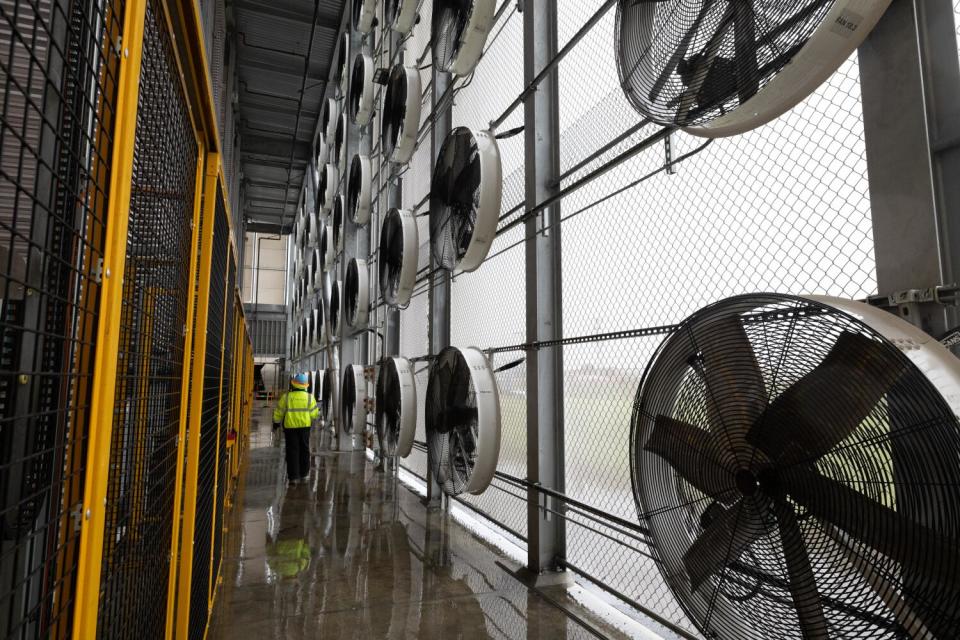
While reducing the use of fossil fuels is the surest way to prevent that warming from getting worse, Aiyer and many other experts, researchers and public officials are converging around the notion that scientific intervention will be necessary.
"We need to move fast, and we need more lawmakers to not move at the speed and scale of government, but rather at the speed and scale of our children's generation, and the next generation, depending on it," he said.
Read more: The planet is dangerously close to this climate threshold. Here's what 1.5°C really means
The government is getting on board — as is Silicon Valley. The Tracy facility is capable of capturing 1,000 tons of CO2 per year, which will be stored for centuries in concrete that is already being used to build bridges, roads and other local infrastructure. The company makes a profit by selling carbon removal credits to buyers such as Microsoft, Stripe and Klarna, which are investing heavily in the technology.
But it will take a lot more than 1,000 tons of annual CO2 removal to make a dent in global warming: Current CO2 levels in the atmosphere are 425 parts per million and counting. To truly make a difference will require carbon removal at the gigaton scale, or billions of tons each year, according to the IPCC.
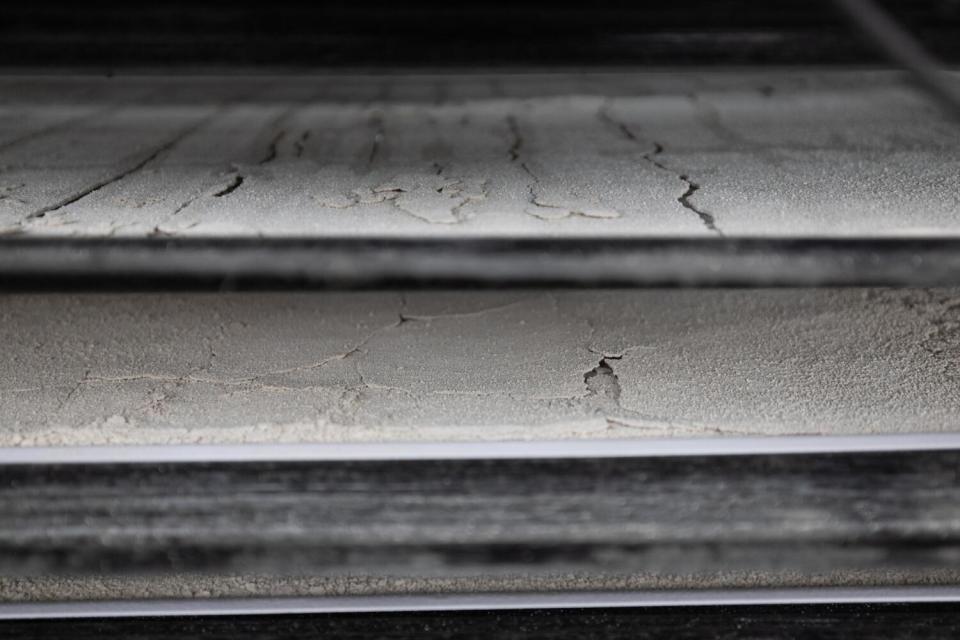
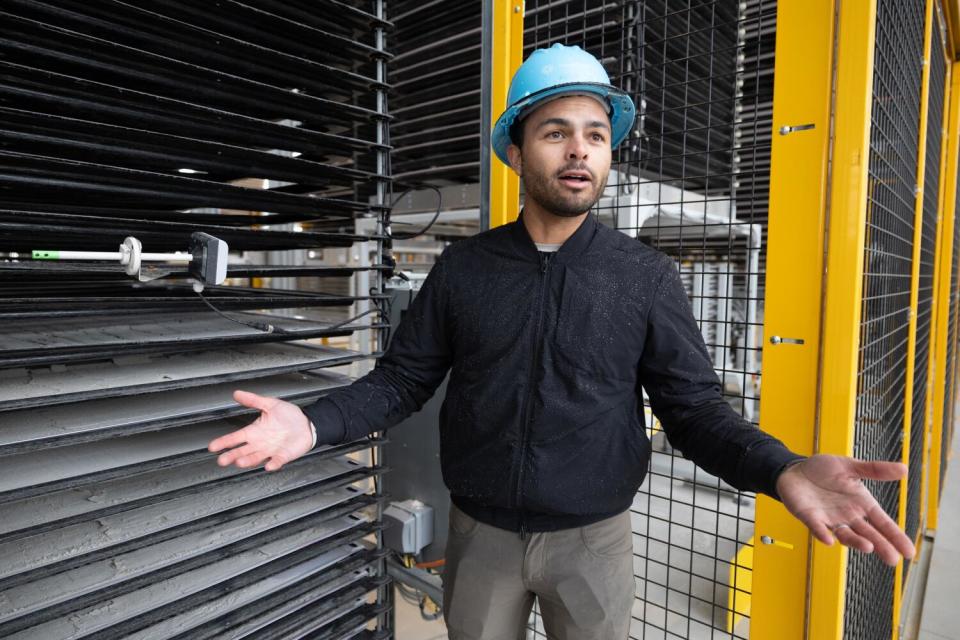
Earlier this year, the U.S. Department of Energy awarded $50 million to Heirloom and its partners to develop what will become a massive, million-ton direct air capture facility in Louisiana. The funding was part of a larger $1.2-billion investment into direct air capture technologies announced by the Biden administration last year.
Several Los Angeles startups are also getting into the carbon removal game, including Captura, a company working to remove CO2 from the upper ocean, and Avnos, a company whose technology produces water while capturing carbon. Avnos also recently secured funding from the Department of Energy.
The hope is that operating such projects around the country and the world will not only stop global warming, but eventually help reverse it, said Christian Theuer, Heirloom's policy communications manager.
"You halt it by getting to net zero, by not putting out any new CO2 emissions into the atmosphere," Theuer said as he circled the towers in Tracy. "Then you can move into the negative emissions territory, where you're cleaning up legacy pollution that is already warming the planet."
Read more: Column: Biden's State of the Union address should give us hope on climate
But direct air capture is only one of the many ways scientists, policymakers and researchers are hoping to alter the planet's worrisome trajectory. Solar radiation modification — a form of geoengineering designed to artificially cool the planet — is also being seriously studied as a solution.
There are many forms of solar radiation modification, including a concept known as marine cloud brightening, which uses sea salt particles to increase the reflectivity of clouds in order to reflect more sunlight away from Earth. A program run by the University of Washington recently initiated a test of the concept off the coast of San Francisco.
But perhaps the most promising — or at least the most studied — geoengineering solution is known as stratospheric aerosol injections.
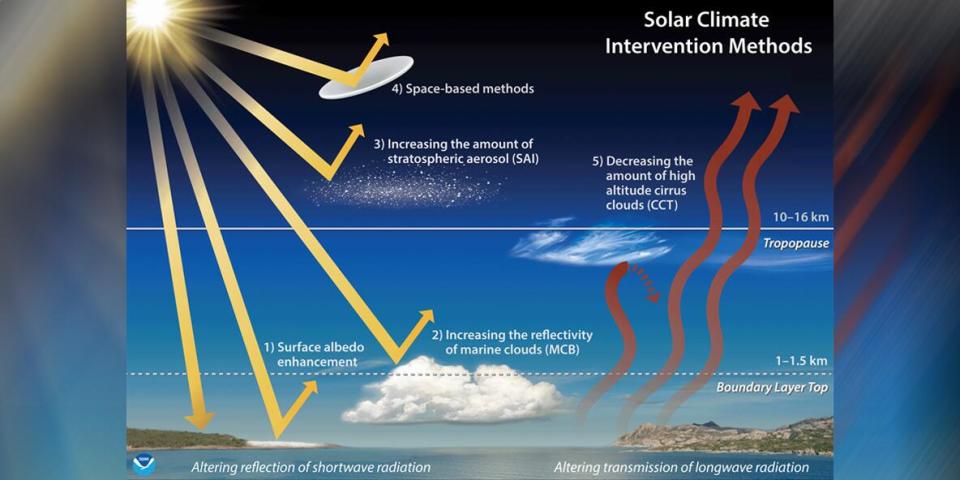
The basic idea is to manually re-create the process of volcanic eruptions, which cool the planet by spewing sulfur and other particles into the stratosphere, temporarily blocking sunlight. Researchers already know from studying volcanoes that this infusion of sulfur creates a planetary cooling effect that can last two or three years.
That and other forms of solar radiation modification are gaining so much attention that last year, the White House released a congressional report on the matter that not only considers its feasibility, but also outlines the urgent need for a framework to govern its research.
Solar radiation modification "offers the possibility of cooling the planet significantly on a timescale of a few years," the report says. "Such cooling would tend to reverse many of the negative consequences of climate change, albeit with ramifications which are now poorly understood."
Indeed, such a concept carries many potential benefits as well as potential risks, according to Chris Field, director of the Woods Institute for the Environment at Stanford University. Field led a major National Academies of Sciences report on solar geoengineering that is reflected in the White House's findings.
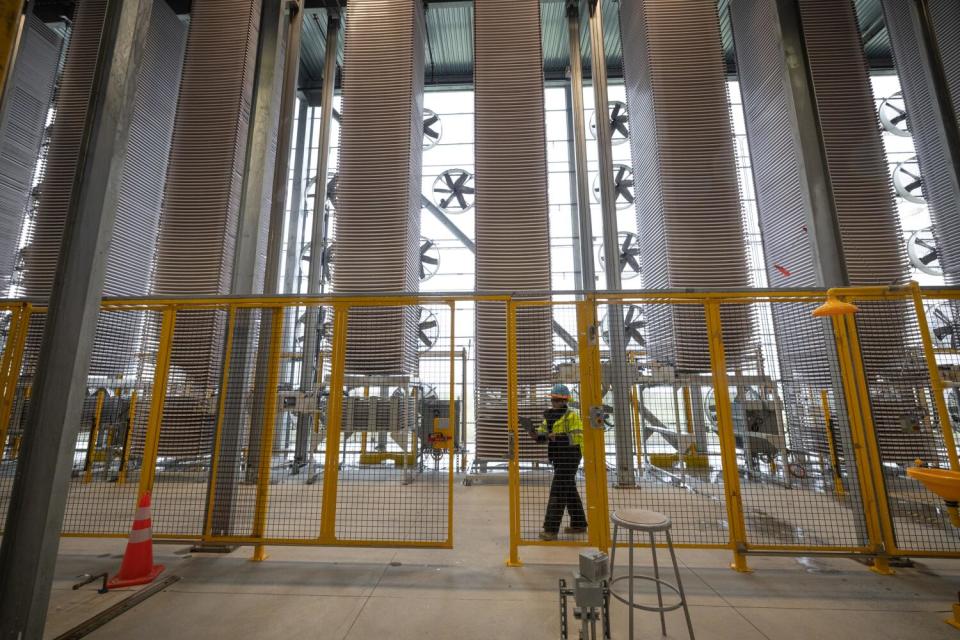
"We have a pretty solid understanding that injecting aerosols in the stratosphere would make the average temperature cooler, but you would want to do a lot more than that if you were serious about a deployment of this stuff," Field said. "You would want to know about the regional effects and you would want to know about the possibility of any unintended consequences outside the climate system. You'd also want to know a lot about what kinds of strategies you would have in place to make this governable."
Last year, a company called Make Sunsets made headlines when it began testing stratospheric aerosol injections by releasing sulfur-filled weather balloons from a launch site in Mexico. The move generated considerable opposition from the scientific community, which said it was too soon to conduct such experiments without more guardrails. An open letter signed by more than 110 physical and biological scientists in the wake of the incident affirmed "the importance of proceeding with responsible research."
Part of the reason for concern is that when sulfur dioxide leaves the stratosphere and sinks into the lower atmosphere, it can potentially fall as acid rain. That doesn't mean the concept isn't worth studying, but it does mean transparency about funding, research and results must be made available for broad discussion, Field said.
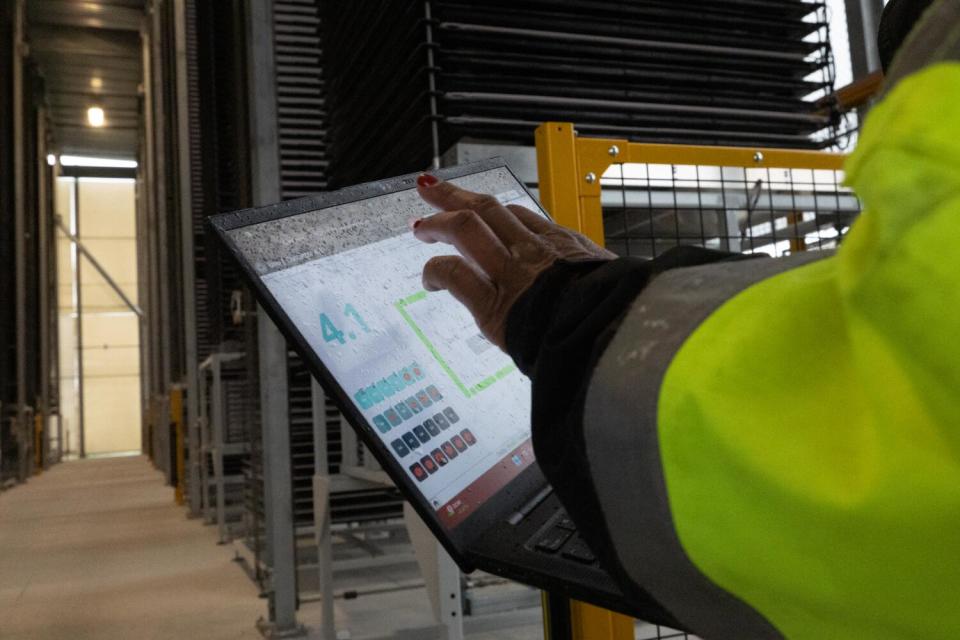
"If it doesn't have a certain level of public trust — especially in the world's developing countries — there is essentially no way that it could be deployed and sustained over an extended period," he said. He added that it is not really possible to design a stratospheric deployment that is limited to one part of the world's geography, meaning that any injections would have global implications.
Critically, Field and other experts said geoengineering should not take the place of decarbonization, or efforts to reduce or eliminate CO2 emissions around the world. California has committed to reaching carbon neutrality by 2045.
"There's no world in which solar geoengineering is a solution to climate change — it's kind of a Band-Aid so that we don't experience the full range of impacts of the climate change that's still there," Field said. "And it's really important to recognize that, because it's just a Band-Aid, we really don't want it to take attention away from decarbonization."
Read more: Biden administration revs up plans to transition from gas-powered vehicles to EVs
While direct air capture and aerosol injections do show potential, there are other concepts for cooling the planet that have garnered some interest — or at least raised some eyebrows.
A Southern California-based organization called the Planetary Sunshade Foundation has posited that the best solution to climate change isn't here on Earth, but rather in outer space, where a massive sail-like structure could reflect sunlight away from the planet.
"We are on track to continue to see significant increases in global temperature, and so solar radiation modification will continue to be talked about more and more," said Morgan Goodwin, the foundation's executive director. "And the planetary sunshade, we believe, is the sustainable, long-term way of doing solar radiation modification."
The sail — or more likely, the collection of sails — would need to measure approximately 580,000 square miles in size to offset 1 degree Celsius of warming, Goodwin said. It would need to be located at the Lagrange 1 Point in space, nearly 1 million miles from Earth — a location where the gravitational pull of the sun and Earth would essentially pin the object in place.
The design requirement calls for a material that is thin, light and capable of blocking sunlight. Basically "aluminum foil," Goodwin said.
The result would be shading that is diffuse and spread out evenly across the entire globe. The amount of solar shading — about 1% — would be less than what most people can perceive on Earth, and its effect would be less than what some high-altitude clouds already have on sunlight, he said.
The concept is similar to a solar sail spacecraft, forms of which have already been deployed in space. A proposed NASA solar cruiser mission would fly a large solar sail to the Lagrange 1 Point, though the project has stalled due to lack of funding. Goodwin said the Sunshade Foundation is advocating for that mission to fly, and for the U.S. government and other agencies to consider their technological proposals.
"There's so much energy and so many resources in the space sector, and part of what we're saying is that the space sector can play a role as part of the climate solution," he said.
But like other climate adaptation solutions, there are potential downsides. For one, such a project would be large and expensive, and would require constant upkeep and maintenance when meteorites and space debris impact the sails. What's more, there are unknown unknowns, such as whether even a small percentage of sunlight reduction could affect photosynthesis and have an adverse impact on agricultural crops.
But the idea is more "sustainable and responsible" than other forms of solar radiation modification, Goodwin said, although he stressed that it, too, should not take the place of emissions-reduction efforts.
"I feel much more hopeful about the future knowing that I can help advance this and help make this a reality, and give us all a much better shot," he said. "You know, the future is far from certain, and it will be far stranger than we imagined."
Back on Earth, the limestone towers are already up and running in Heirloom's 15,000-square-foot direct air capture facility in Tracy.
The process there involves heating limestone in a massive kiln, which turns it into a mineral powder that is spread onto the towering stacks of trays. The powder acts like a sponge for CO2 — pulling it from the air and hardening into a crust. Once saturated, it is returned to the kiln where the CO2 is extracted, and the cycle begins again.
The extracted CO2 is transported off site where Heirloom's partner, CarbonCure Technologies, injects it into recycled water that is used to make concrete that is now being used throughout Bay Area infrastructure.
"Once it's in that concrete, it's not going back into the atmosphere," Theuer said of the CO2. "It's permanently a part of that product. Even if in some scenario you blew up the building associated with it, it would still stay embedded amid the rubble and wouldn't reenter the atmosphere. It's now a stone."
The process is different than carbon capture, which involves capturing CO2 at the source where it is emitted. Carbon capture plays a role in the state's cap-and-trade program, which sets limits on greenhouse gas emissions and allows companies to buy and sell their unused credits. That program has seen mixed results, with some critics saying it ultimately enables more pollution and creates more allowances for emissions.
As a commercial operation, Heirloom sells its carbon offsets to a voluntary market at a rate of $600 to $1,000 per net ton, and the company says it does not take investments from oil and gas businesses. Already, some fossil fuel companies have shown interest in direct air capture technology, including at least seven oil and gas producers that have invested in, or are working to develop, direct air capture projects.
Aiyer said he is closely watching Senate Bill 308, new legislation in California that would create a framework by which the state government approves standards for carbon removal. It would also compel heavy emitters in the state to account for their emissions through offset purchases or removals, among other measures.
But there are potential downsides to direct air capture, including its high energy costs, which could limit the technology's ability to expand. The Heirloom facility and many others run on 100% renewable energy, including wind and solar power, but experts say fusion and geothermal energy could be potential sources for such technology in the future.
And while concrete storage is currently the best available option for carbon sequestration in the U.S., cement is a known contributor to fossil fuel emissions. Heirloom officials said they anticipate transitioning to underground storage wells in the future, pending permitting approval from the Environmental Protection Agency. Geologic storage is already used in parts of Europe, and there are at least 506 billion tons of accessible pore space for permanent CO2 storage in the U.S., they said.
What's more, the interest from Big Oil has met with broader concerns that carbon removal, geoengineering and other climate change solutions could have the unintended consequence of enabling society to continue its reliance on fossil fuels. If these tools can clean CO2 or cool the planet, the logic goes, then the use of gas-guzzling cars, smog-producing products, and oil and gas drilling can continue as usual.
It's a refrain many working in the climate adaptation space have heard before. Still, the steady hum of progress has given even those most entrenched in the battle against global warming some semblance of optimism for the future.
"These technologies — whether it is our pathway of direct air capture or other carbon removal technologies — should not be a fig leaf for additional fossil fuel expansion," Aiyer said. "We need to make sure that we are reducing our reliance on emissions and fossil fuel production, and we need to do these removals."
Read more: L.A.'s water supplies are in good shape. But is the city ready for the next drought?
This story originally appeared in Los Angeles Times.

